On Windows 11, File Explorer has a modern design and more features, such as tabs and smarter tab management. File Explorer has gotten a lot better when it comes to features, but there’s always some room for improvement, and one of the alternatives that tries to fill the gap is “File Pilot.”
File Pilot, a next-generation third-party file manager, was launched recently as a free beta. It has positioned itself as a worthy competitor to Microsoft’s default File Explorer on Windows and I am going to take a closer look at it in this article.
Hands-on with File Pilot: an alternative to Windows default File Explorer
What makes File Pilot interesting? First, it has all the features that directly compete with Microsoft’s File Explorer. Second, File Pilot offers much-needed features that you won’t find in File Explorer yet. This includes batch renaming.
One more thing that I like about File Pilot is its size. File Pilot is only 2 MB and has fast tab-opening and closing capabilities.
Overall Design
The overall design of File Pilot is simple and quite similar to the existing File Explorer, but it feels less cluttered and is more centered on file management. You’ll not find OneDrive, Microsoft 365, or other ads that you would casually come across in the original File Explorer.
File Pilot’s interface can be customized. You can even change the fonts or their size. In fact, it’s possible to change spacing between items as well.
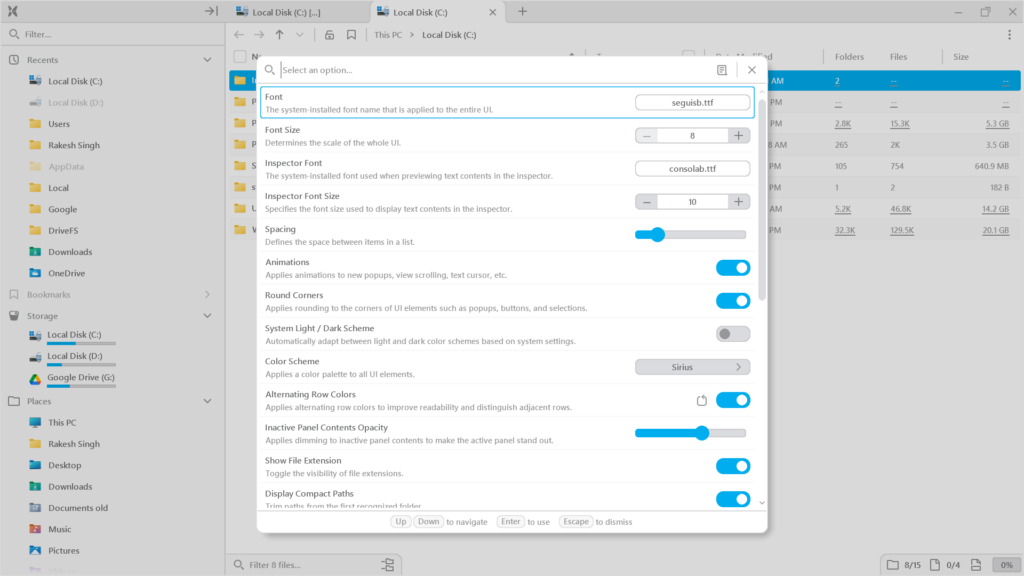
The UI elements, like buttons and selections, can be altered with rounded corners or sharp edges.
Apart from the usual light and dark themes, color schemes offer custom color palettes to all UI elements. It contains some readability enhancement features like alternating row colors and dimming inactive panel.
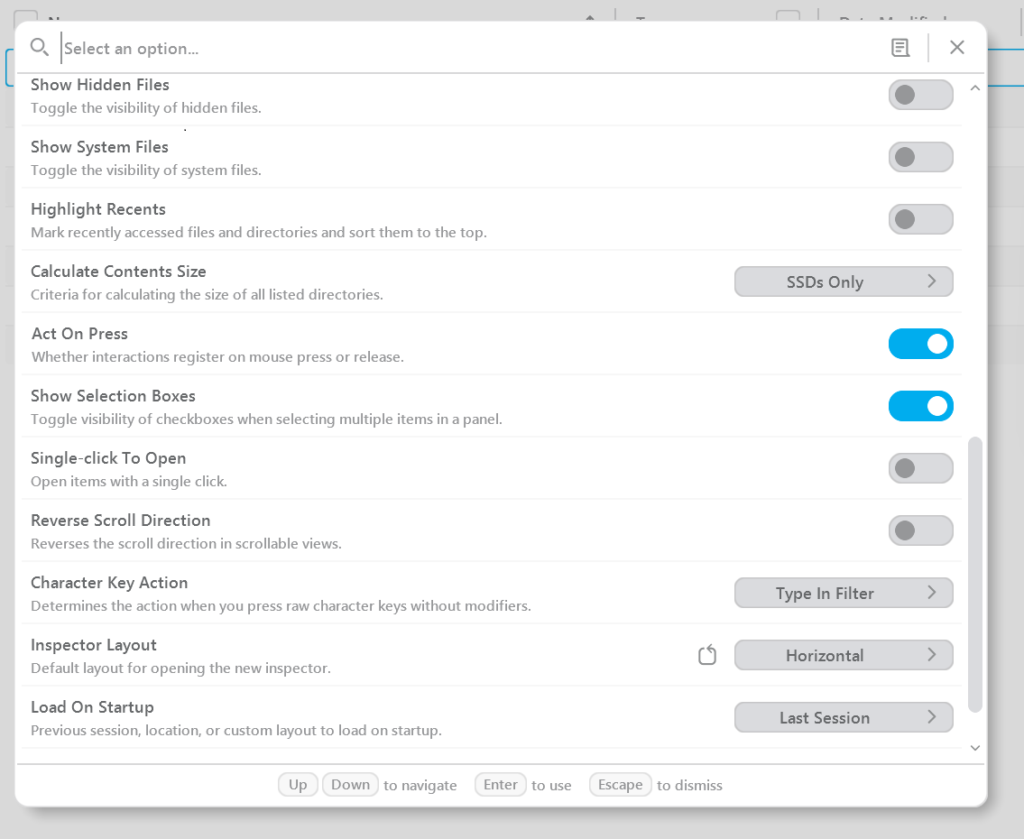 File Pilot has various toggle switches to show/hide file extensions, hidden files, or display compact paths. It’s worth noting that while some of these options are also available in the default Explorer, they are not found in one place.
File Pilot has various toggle switches to show/hide file extensions, hidden files, or display compact paths. It’s worth noting that while some of these options are also available in the default Explorer, they are not found in one place.
File Pilot consolidates all these options into a single Options pane (Ctrl + ,).
Tabs and Split View
File Pilot enables users to open folders in new tabs or create a split view. You can arrange tabs in various configurations by simply dragging and dropping them, assisted by a Snap Assist-like overlay.
This is quite impressive and matches the overall workflow of Windows 11.
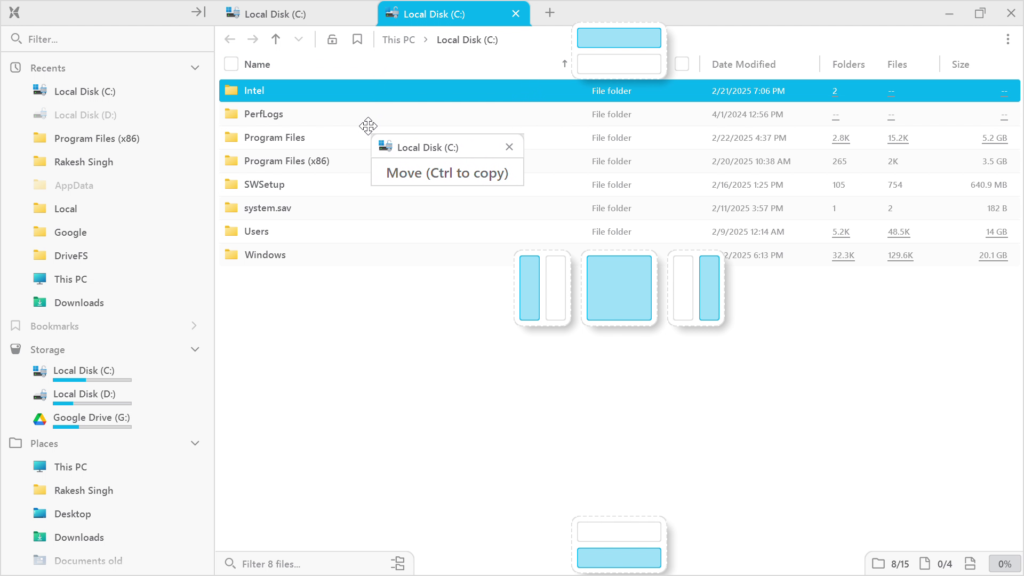 The split view offers both vertical and horizontal splitting. Center click of the mouse on any folder allow users to easily create a split view. This results in smooth multitasking and efficient navigation between folders.
The split view offers both vertical and horizontal splitting. Center click of the mouse on any folder allow users to easily create a split view. This results in smooth multitasking and efficient navigation between folders.
If you have a large monitor, you can carry out multiple splits on a single tab. Power users would definitely appreciate this functionality.
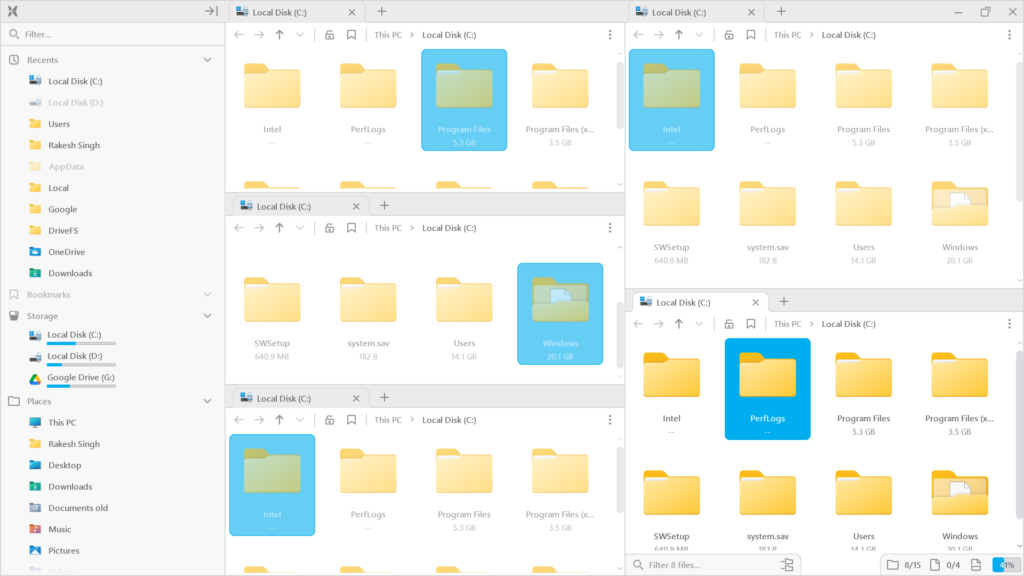
Search
The search functionality is quite impressive. Unlike Explorer, it offers both local and global filtering options, making file searches easier. The search bar at the bottom allows searching for files inside the current folder or content within any subfolder as well. This can be done using a simple toggle switch on the right side of the search bar.
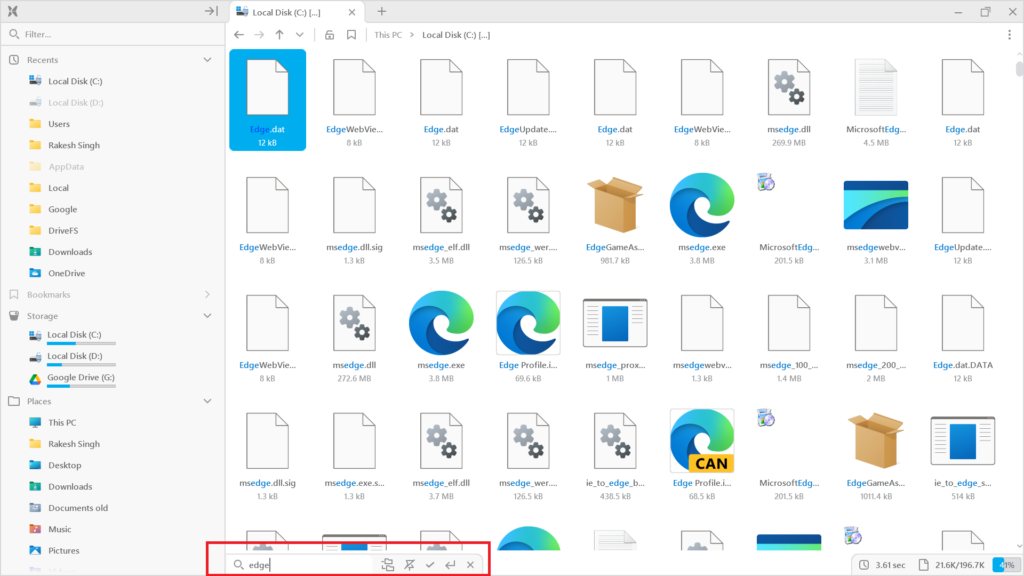
If you want to perform a global search for files, simply start typing in the search box located in the top left corner. This enables users to search for any file on any drive, regardless of the current folder location.
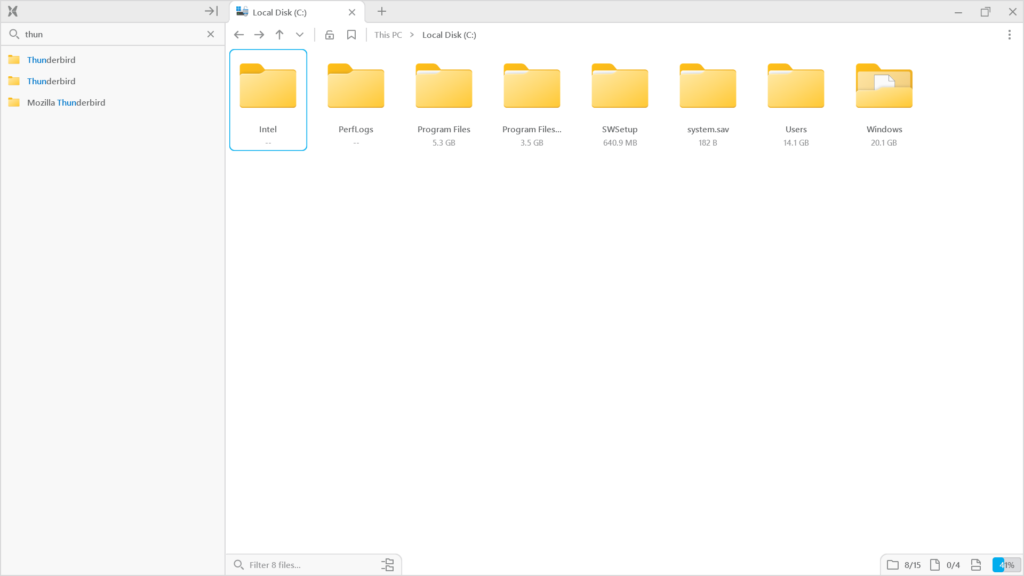
Inspector View
When you press Ctrl+I on any folder, the inspector view opens up, which displays the files and folders inside the selected folder. Once in the inspector view, you can click on any folder in the left panel to see what’s inside on the right-side view.
However, if you click on any file in the left panel, a preview of the file is shown in the right-side inspector view.
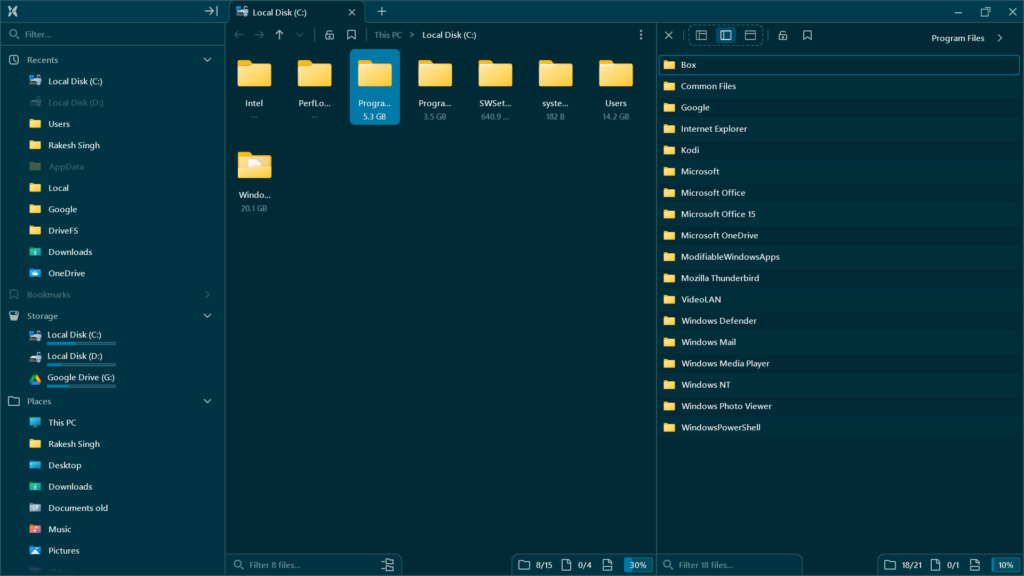
There’s also a feature that gives you a Quick Look at images. This is similar to the macOS Quick Look feature. So, if you press Space on any file, the preview of the content is shown in a preview pane that opens up quickly.
This reduces the need to open multiple apps and hence saves your time
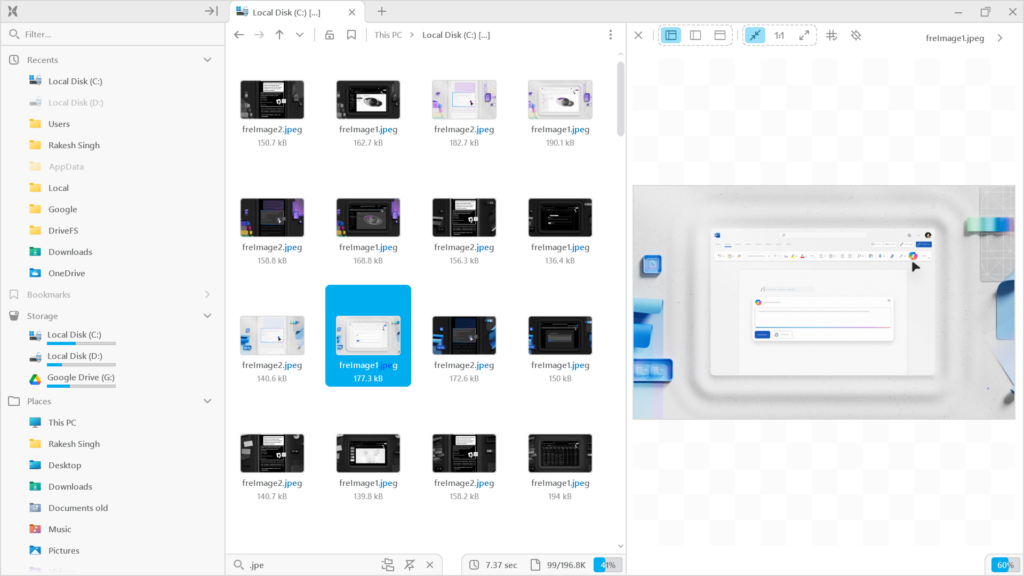
Folder Size Information
File Pilot provides real-time calculations of folder sizes. This enables users to better analyze the space occupied by files and folders without needing to check inside each folder. At present, this handy feature is not available in the default File Explorer.

Batch Rename
File Pilot’s built-in batch rename feature makes renaming multiple files easier than ever.
You can can rename multiple files together by simply selecting the files and right clicking to select rename. It’s that simple.
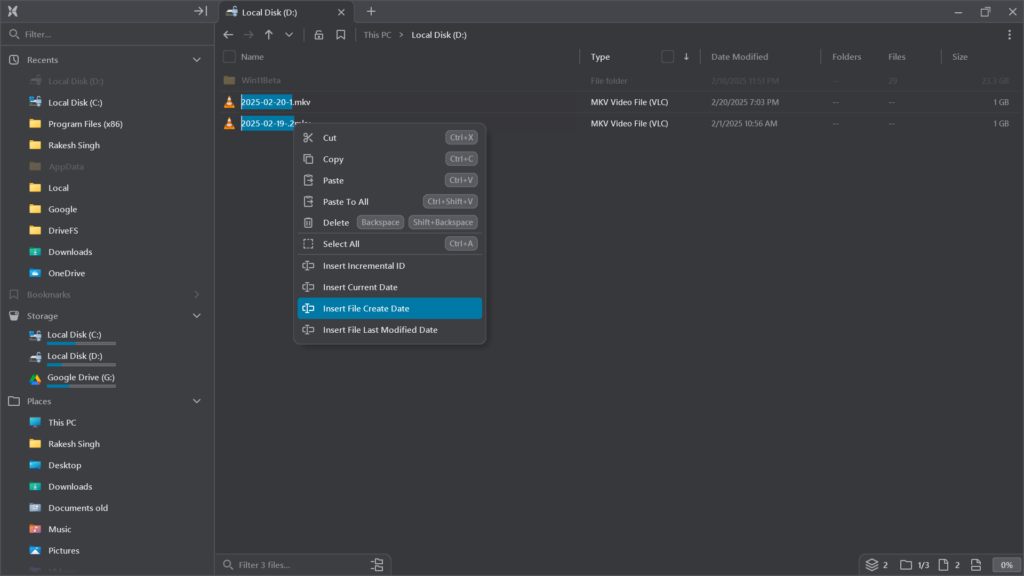
While batch renaming, you can insert creation or modification dates or generate unique IDs. This feature allows better file management and ensures consistency in naming.
Command Palette
File Pilot’s command palette allows you to search all the actions/features/toggles and use them. You can also assign shortcuts/hotkeys using the + symbol on any selected command.
This actually makes file manager very interesting on Windows 11. You can quickly customize the actions, and access the command palette using Ctrl+Shift+P keyboard shortcut.
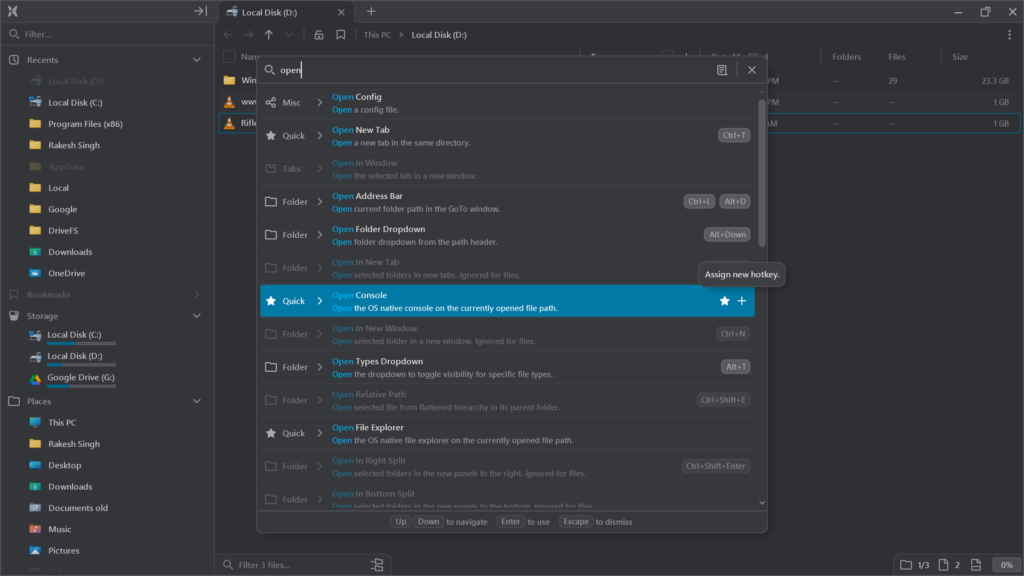
Considering all its features, File Pilot is undoubtedly worth trying. If it continues to improve with each update, it has the potential to completely replace existing File Explorer.
File Pilot is free only when it’s in the beta stage, so if you want to try it while it’s free, grab it from the official website.
The post Hands-on with File Pilot, a new alternative to Windows 11’s File Explorer appeared first on Windows Latest
